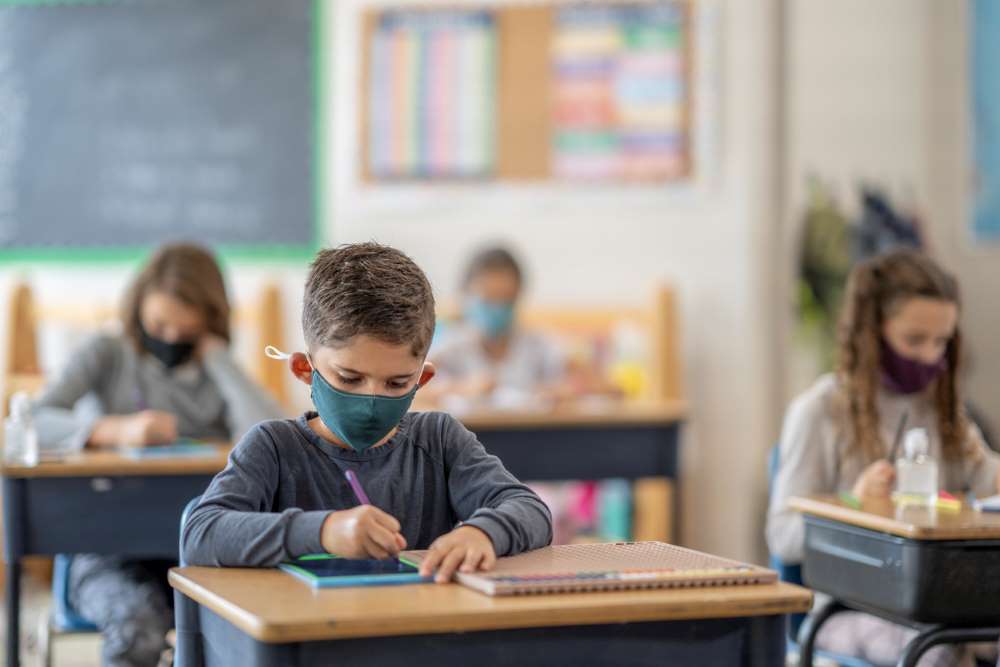
Social distancing is not only challenging for adults but also kids. As a parent, you need to help them go through the process.
COVID-19 pandemic has stopped many kids from interacting with their friends, neighbors, and teachers. Camps, playgrounds, after-school programs, child care centers, and schools were closed to slow the virus’ spread. Families need to stay at home or practice social distancing, limiting young children’s ability to spend time in-person with other people.
Social Distancing Overview
Social distancing involves keeping distance between people since COVID-19 is believed to spread primarily from person to person. The virus is more likely to spread if more people will have in-close contact with each other. With social distancing, everyone can slow the spread of the virus, especially those at higher risk of acquiring illnesses.
What is the Impact of Social Distancing to Kids
For kids, changes like social distancing can cause loneliness. This negative emotion brought by the pandemic is tough on kids. Children tend to have a harder time expressing their feelings than adults. They cannot rely on familiar coping strategies like visiting and playing with friends in this current situation. Social distancing also prevents them from spending time with friends during social development and growth.
Friendship with other kids gives them essential support, allows them to develop personal identities, and builds a sense of belonging. However, social distancing measures can prevent them from experiencing these things.
Loneliness in kids can have a long-term effect. It is linked to different mental health conditions like anxiety and depression. If kids have an existing mental health condition, it can be worsened due to stress and less access to health care.
Ways to Help Kids Go Through Social Distancing
Social distancing at school and other places are challenging for many kids. However, kids who think and learn differently will find those measures even more challenging. The best thing you can do is to take advantage of the following tips for helping your kids go through social distancing:
1. Impulsivity
An impulsive kid will have a challenging time putting on the brakes. They will also find it hard to think through their actions. For instance, if they are excited to play or talk with other children, they tend to become closer unknowingly.
For Families:
Playing a “Red Light Green Light” version will help in putting on brakes. You can put stuffed toys or other objects around your home. When your kids start to get close, call out “yellow light” while “red light” when they are closer than six feet.
For Teachers:
You can use a verbal and visual class signal when kids are getting too close with each other. For instance, the signal is putting up a palm, and the word is “Halt.” Tell the kids to use these signals once somebody gets too close to them.
2. Trouble with Focus
Some kids are easy to get distracted or have difficulty paying attention. In return, they have moved too close to other kids.
For Families:
Use easy reminders, sound, words, or phrases when kids get too close to others. Let them visualize how social distancing will look like by using a 6-foot string. You can let them guess how far six feet is and measure how close their guesses are.
For Teachers:
Use a simple word or phrase to let the kids know that they have been wandered too close to each other. That way, you can avoid “distance shaming.”
3. Sensory Issues
If your kids have sensory processing issues, they have trouble determining where their bodies are in space. As a result, they cannot tell how close they are to other kids.
For Families:
Get a measuring tape to show your kids the exact length of six feet. If you want to use a locking measuring tape, ensure to lock it in place and allow your kids to measure how many toe-to-heel footsteps and arm lengths the six feet is.
For Teachers
Use tactile elements to the way-finding markers on the hallway and classroom floors. That way, kids will know that their feet are moving out of their space bubble.
Other Tips for Helping Kids Adjust to Social Distancing
Adjusting to social distancing is really hard for kids. So, you can also try the following tips:
Give Kids Smart Connected Toys
Kids can still have fun and enjoy playing while staying at home. You can give them smart connected toys. The entire family can play with them to make them feel that they are not alone. It will also make them realize that they can still play despite social distancing measures.
Consider Online Counseling
If you notice that your kids need counseling, you can find lots of online counseling options at affordable prices. After all, it would be hard for you to tell the difference between depression and sadness. That is why talking to the experts is advantageous. Plus, you will know the best solutions for your kids.
Consider a Virtual Connection
You can use different devices like smartphones, tablets, or computers to help kids send messages to their friends, classmates, and parents. Consider arranging a virtual play or visit date using different apps. You can also add relatives to the connections, so they can share a joke and read a bedtime story together.
Try Alternative Celebrations
Some kids love birthday parties and other gatherings. However, they cannot enjoy these events for now. If you want to help them still enjoy special occasions while complying to social distancing, you can try alternative celebrations. For instance, you can take advantage of the virtual space to celebrate your kids’ birthday. You can send food to their nearby friends and make a virtual celebration.
Conclusion
Social distancing and adjusting to other changes can be challenging for your kids at first. With your guidance, support, and love, they can get through it. It would help if you also were emphatic and patient. You need to make them feel that they can still enjoy things while assisting them in understanding the current situation.



























